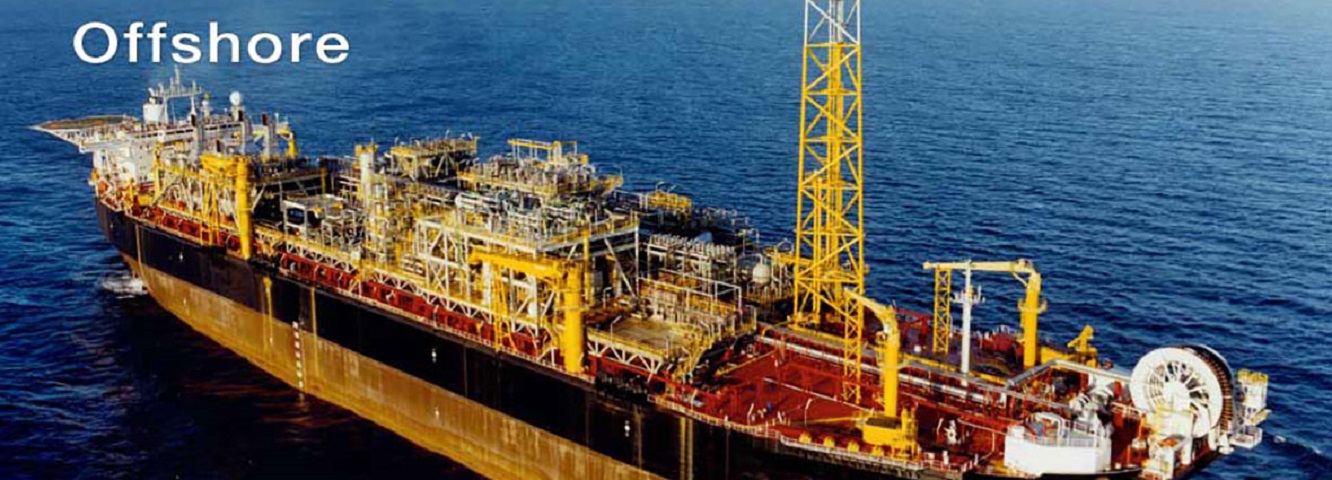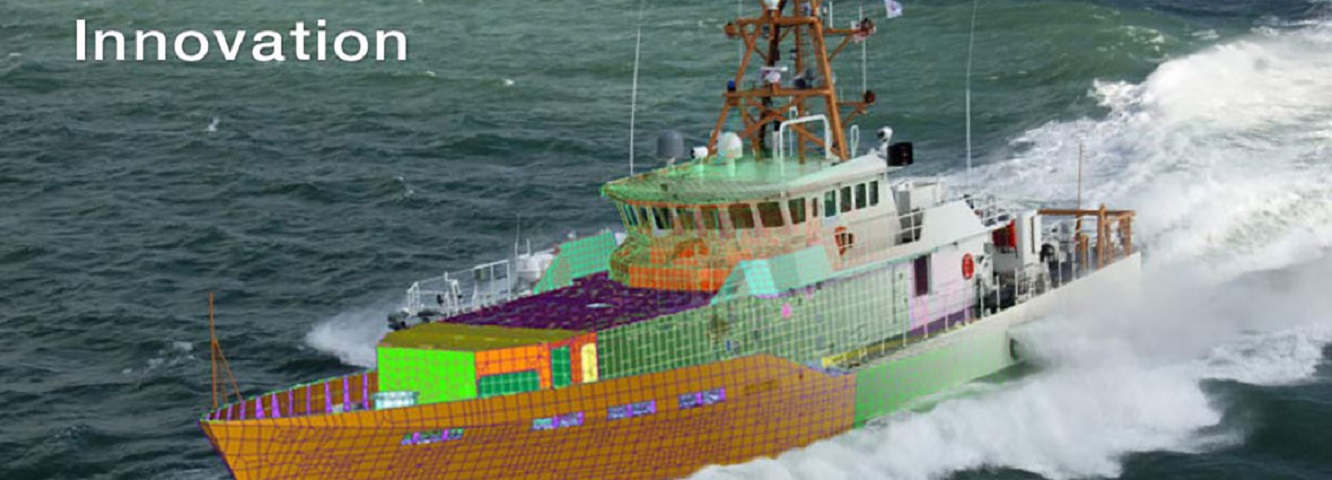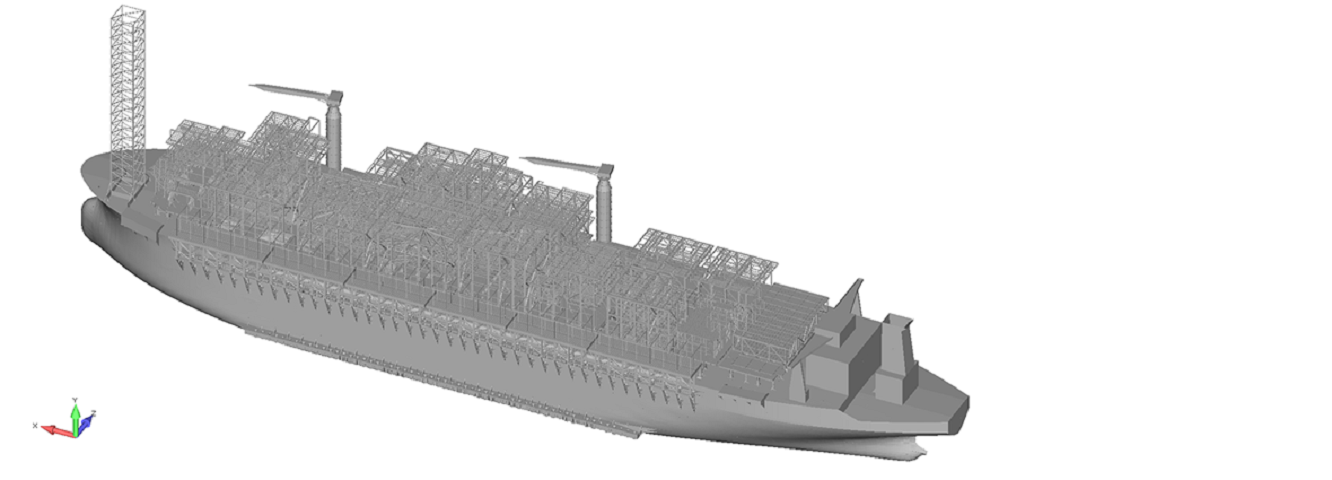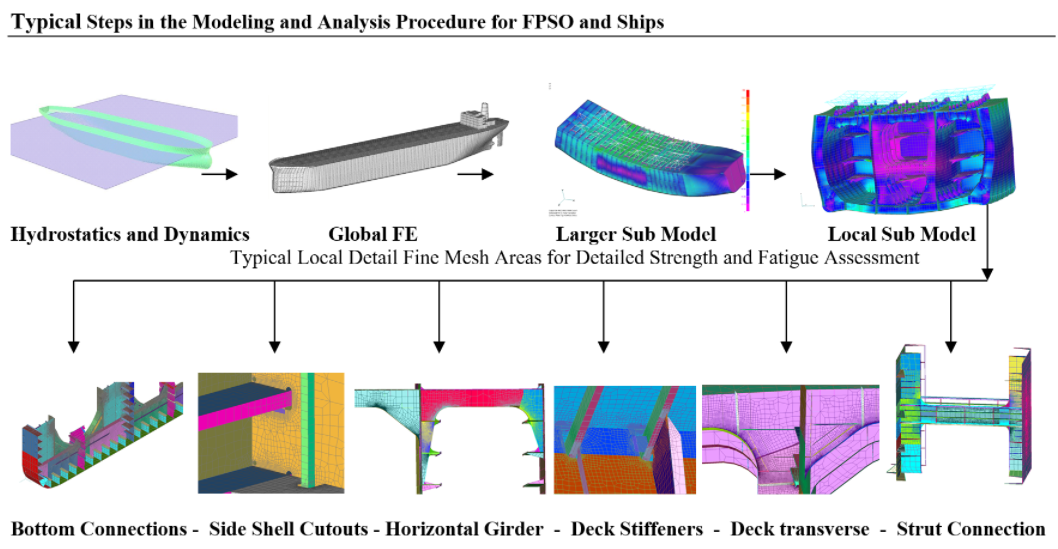Viking Systems
Ship & Offshore Structure Design & FEA Assessments
Viking Systems
Ship & Offshore Structure Design & FEA Assessments



Viking uses state-of-the-art structural modeling and analysis software tools, such as Femap, NASTRAN, Sesam, LS-DYNA, and classification society programs. Combining these with our proprietary software, SAGA, allows us to model, load, and evaluate ship structures. Below, you can read about the main features of SAGA and how we apply the program to reliably and rapidly model, load, balance, and evaluate FEA models against classification society structural codes from ABS, DNV, BV, Lloyd’s, API, AISC, and others.
We developed our structural design software procedures around SAGA to obtain a reliable, repeatable, and cost-effective method that ensures our clients receive consistent, high-quality work from our departments. We have achieved a flexible structural modeling, loading, and evaluation tool that interacts with other efficient, industry-accepted software, such as modeling software (e.g., Femap, Ansys, SACS), FEA solvers (e.g., NASTRAN, Sestra, LS-Dyna), stability programs (e.g., HECSALV), and hydrodynamic programs (e.g., Wadam, WaSim, Aqwa, Wajak). The results are available in a virtual reality modeling language (VRML) format viewable in web browsers.
The SAGA computer program has been applied to ships and offshore structures fabricated from steel, aluminum, and composite construction materials. It uses processes like:
SAGA gives our teams the tools they need to focus on solving structural problems while ensuring an adequate and optimal design. SAGA allows the following:
SAGA is used to rapidly create ship finite element models via importing CAD transverse section offset data in formats used by surface modeling tools. The file formats supported include AutoCAD (.dxf), GHS (.gf1), and HECSALV (.hul) files. The system supports the assembly of models created by several team members using SAGA and a finite element modeler, such as Femap, Abaqus, or Ansys. This method supports a parametric assessment of a number of structural configurations under consideration. Detailed local models can be made from the global model, using features like nodal section insertion and beam shapes-to-plate data extraction. These models are loaded by nodal deflections and rotations, accelerations, and pressure loading.
SAGA carries out fine element grouping to support naval architecture loading groups throughout the vessel. The loading groups include the external hull, tanks, deck areas, engine room, and other user-defined groups depending on the analysis requirements. The hull group can be exported in a NASTRAN format for loading by external programs, such as WaSim, Wadam, LAMP, or SAGA using built-in classification society rules. After the loads have been added, SAGA is used to either inertia-balance or position-balance the model to eliminate boundary condition influence.

SAGA reads stresses from NASTRAN and DNV’s Sestra program for assessment against the yielding and buckling requirements of ships and offshore structure classification societies like ABS, BV, and DNV. SAGA performs advanced post-processing of results by establishing structural failure regions in combination with the material, property, deflection, and stress data from the finite element model. SAGA is capable of using classification society rules from ABS, DNV, BV, and Lloyd’s. Additional custom code checks are easily programmed by the user via a spreadsheet interface.
Viking’s SAGA program is constantly at work on ships and offshore structures, providing our teams with design and assessment capabilities on all types of structures. SAGA is used for the structural projects of all types of ships, including:
SAGA’s built-in code-checking capabilities include the industry standards published by regulatory bodies and classification societies, such as:
Viking’s SAGA program prepares results for our users and clients using a virtual reality modeling language (VRML) format viewable in standard web browsers and other programs that read VRML (e.g., Rhino). The resulting files are available to clients interested in information technology and wish to see the results in interactive 3D rather than simple reports.
Viking’s computer programs and team spirit are named after figures in Nordic mythology. This is in line with our Viking traditions that have endured for over a thousand years:
SAGA stands for “Structural Assessment Graphical Application” and is a computerized tale of “structural events” created, assessed, and safeguarded for current and future learning. It is just like the Viking-era sagas that are preserved to this day.
ODIN, or Optimum Design Integration Network, is named after the Viking leader Odin who sends out a pair of ravens, Hugin (Old Norse for “thought”) and Munin (Old Norse for “mind”), all over the world to gather information. In our case, our structural computing solutions were created by our network of computers and employees.
THOR, the son of Odin and Fyorgyn, is the most powerful of all when taking action, going beyond boundaries, and leading teams. Each of our Viking team members, like Thor, embodies great strength of character, indispensable leadership qualities, and an ability to be a strong team player. These are the true qualities of Vikings then and now.





3 Fusionopolis Place
#05-53
Singapore 138523